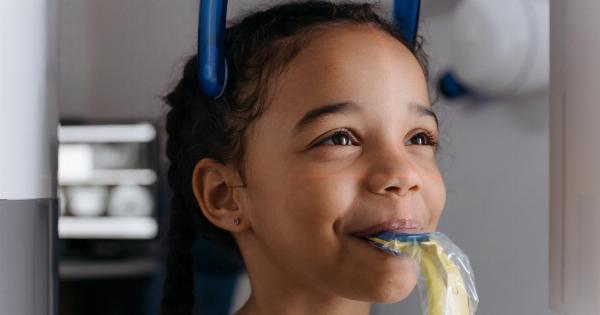Cavities, also known as dental caries or tooth decay, are a common problem among children. They can cause pain, discomfort, and may require expensive dental treatments.
However, cavities are preventable with proper oral hygiene practices and regular visits to the dentist. In this article, we will discuss some effective ways to prevent cavities in children.
1. Encourage Good Oral Hygiene Practices
Teaching your children good oral hygiene practices is crucial in preventing cavities. Make sure they brush their teeth at least twice a day using a fluoride toothpaste.
Choose a toothbrush appropriate for their age and supervise their brushing until they can do it independently. Also, encourage them to floss daily to remove plaque and food particles from between their teeth.
2. Limit Sugar Consumption
Sugar is one of the main culprits behind tooth decay. The bacteria in the mouth feed on sugar and produce acids that attack the tooth enamel. Limiting your child’s sugar consumption can significantly reduce the risk of cavities.
Avoid sugary drinks like soda and fruit juices and opt for water instead. Limit their consumption of candies, cookies, and other sugary snacks. Encourage healthier options like fruits and vegetables.
3. Promote a Healthy Diet
A well-balanced diet plays a vital role in maintaining good oral health. Provide your child with a nutritious diet containing plenty of fruits, vegetables, whole grains, and lean proteins.
These foods provide essential vitamins and minerals that strengthen the teeth and gums. Avoid excessive snacking between meals as it increases the exposure of teeth to acids and sugars.
4. Fluoride Treatment
Fluoride is a natural mineral that helps prevent tooth decay and strengthens tooth enamel. It can be found in toothpaste, mouth rinses, and community water supplies.
Talk to your dentist about applying fluoride varnish or providing fluoride supplements to your child if they are at high risk of developing cavities. However, it is important to use fluoride in moderation as excessive intake can lead to fluorosis.
5. Sealants
Dental sealants are thin coatings applied to the chewing surfaces of the back teeth to protect them from cavities. The sealants fill in the deep grooves and pits of the teeth, creating a barrier against food particles and bacteria.
They are a safe and effective way to prevent tooth decay and can last for several years. Ask your dentist if sealants are suitable for your child.
6. Regular Dental Check-ups
Regular dental check-ups are essential for preventing cavities and maintaining good oral health. Schedule visits to the dentist every six months or as recommended by your dental professional.
During these visits, the dentist will examine your child’s teeth, clean them thoroughly, and apply preventive treatments if necessary. Regular check-ups allow early detection of any dental issues and ensure prompt treatment.
7. Teach Proper Brushing Techniques
Mere brushing is not enough; children need to learn the correct brushing techniques to ensure effective plaque removal. Show them how to hold the toothbrush at a 45-degree angle and brush in gentle, circular motions.
Demonstrate brushing all surfaces of the teeth, including the front, back, and chewing surfaces. Encourage them to brush for at least two minutes each time.
8. Lead by Example
Children learn best by observing their parents and caregivers. Be a role model for good oral hygiene practices. Let your child see you brushing and flossing your teeth regularly.
Make oral hygiene routines a family affair by brushing your teeth together or having a friendly competition to see who can keep their teeth the cleanest.
9. Avoid Sharing Utensils and Cups
Sharing utensils, cups, or toothbrushes can lead to the transmission of bacteria from one person to another. This increases the risk of cavities. Teach your child to use their own utensils and cups and avoid sharing them with others, even family members.
10. Educate on the Importance of Oral Health
Explain to your child the importance of oral health and why it is crucial to prevent cavities. Help them understand that cavities can cause pain, infections, and even tooth loss.
Teach them that good oral hygiene practices can prevent these problems and promote healthy teeth and gums for a lifetime.


























